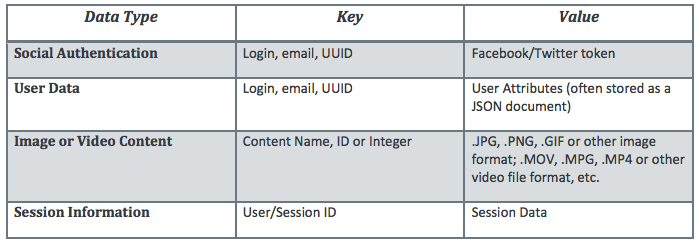March 5, 2013
Mobile platforms need to provide always available, low-latency experiences that can scale to millions of users and support highly concurrent access. Riak’s redundant and fault-tolerant design ensures mobile data can be served quickly and reliably, and Riak is run in production by many popular mobile applications. For a full overview, check out the whitepaper “Mobile on Riak: A Technical Introduction.” Below are a few key mobile use cases and basic approaches to modeling them in Riak:
User Data: Storing user accounts, profile information, and events is a common use case for Riak. Mobile apps often store this data in JSON documents, using a UUID or other identifier as the key. Data can be queried through Riak features such as secondary indexes, MapReduce, and full-text search.
Session Data: Since session IDs are commonly stored in cookies, or otherwise known at lookup time, they are a natural fit for Riak’s key/value model and Riak can serve these requests at predictably low-latency. Session data can also be encoded in many different ways and evolve without any administrative changes to schema.
Text & Multimedia Storage: Since Riak is content agnostic, mobile platforms can easily store a variety of different types of data, including audio, text, photos, video, etc. to power mobile experiences.
Social Authentication: Many mobile applications have users sign in via their Facebook or Twitter accounts. Riak’s key/value scheme makes it easy to store both registered accounts and the tokens that make it possible for users to authenticate with their social accounts.
Global Data Locality: Riak Enterprise’s multi-datacenter capabilities mean mobile data can be stored in physical proximity to users and served at low-latency no matter where they happen to be.
Here is a chart with possible ways these applications and services can be modeled using Riak’s key/value design. Of course, your application should be structured in a way appropriate to its access and query patterns, among other factors – this is just to get you started. For more information on designing applications with Riak, check out our documentation.

To learn more about how mobile platforms can use Riak for their data needs, check out the complete overview, “Mobile on Riak: A Technical Introduction.” For more details about Riak and the latest 1.3 release, sign up for our webcast on March 7th.

